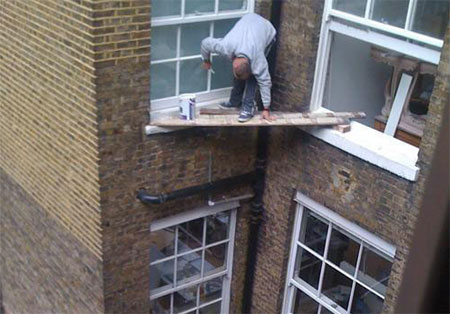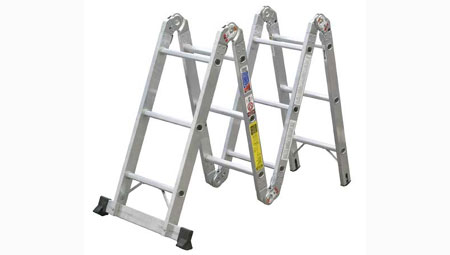Safe use of ladders
Too many accidents happen when ladders aren't used correctly... Don't be another statistic! Make sure you use a ladder safely.
One saying that I have sums up ladder accidents... "Silly buggers always get hurt!" Too many people try to be clever when it comes to makeshift platforms and ladders, with the result that many end up in hospital.
Here are few simple rules for safe use of ladders:
- Wear shoes with non-skid soles for proper grip.
- Clean oil or other debris from the ladder before use and ensure that the rungs or steps are completely dry.
- Inspect the ladder before use to make certain all rungs and steps are intact. A thorough inspection must be made when the ladder is initially
purchased and each time it is placed into service. Also check all working parts: bolts, rivets, step-to-side rail
connections, and the condition of the anti-slip feet. If any structural damage or missing parts is found, the ladder should either discarded or repaired.
- Make sure the feet of the ladder are on firm, level ground. All ladders require level ground support for all feet. The ladder must not be used on ice, snow or slippery surfaces unless suitable means to prevent slipping is employed.
- When using a stepladder, make sure the spreaders (lock-down levers) are fully engaged and locked. Position the ladder so that you're facing your work.
- In order to prevent tipping the ladder over sideways due to
over-reaching, the user must climb or work with the body near the middle
of the steps.
- When using a regular ladder, keep your belt buckle between the rails for added stability and grip.
- Never stand above the second step from the top of the ladder.
- Prop ladders at a 75-degree angle from the horizontal for optimum resistance against the
bottom of the ladder sliding out, strength of the ladder, and balance of
the climber. A simple rule for setting-up the ladder at the proper
angle is to place the base a distance from the wall or upper support
equal to one-quarter of the length of the ladder side rails.
- When ascending or descending the ladder, always face the ladder and maintain a firm hand hold. Do not attempt to carry other objects in your hand/s while climbing.
Every articulated ladder has a unique locking hinge design and
each lock must visibly indicate whether it is locked or unlocked. As a
result, it is important that the user become familiar with the proper
operation of the hinge and make sure all the hinges are locked before
using the ladder. Never attempt unlocking or repositioning any of the
hinges while standing on the ladder.
Lubricate the locking hinges annually, or more frequently depending upon use.


